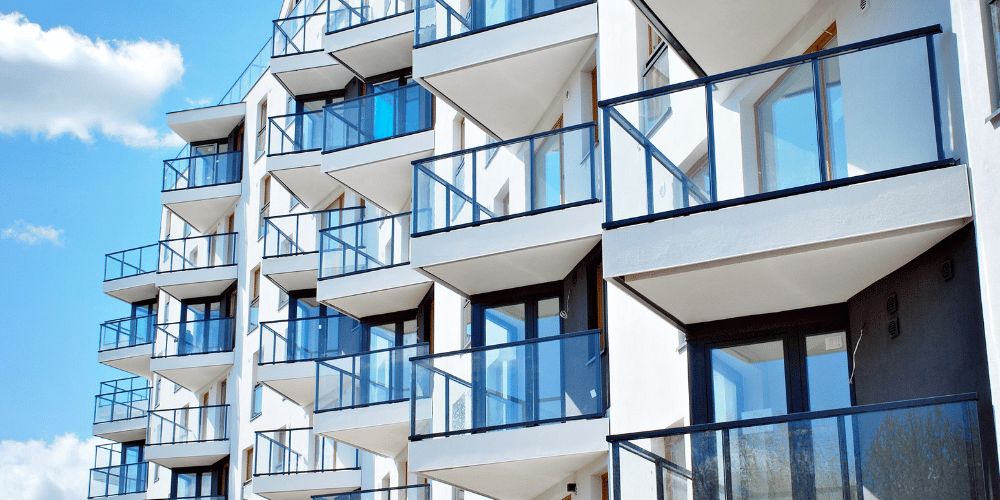The Future of Smart Buildings in Commercial Real Estate

The commercial real estate landscape is transforming, and smart buildings are leading the charge.
As a commercial real estate broker with years in the field, I’ve seen trends come and go, but the rise of smart buildings is unlike anything before. These aren’t just buildings; they’re the future of our industry, equipped with technology that saves energy, optimizes operations, and makes tenants happier.
Smart buildings use the latest tech to do incredible things, from automatically adjusting lighting and temperature to saving serious money on energy costs.
But it’s not just about the bells and whistles.
The shift to smart buildings signals a new era for commercial real estate – one that’s more efficient, sustainable, and adaptable to our ever-changing world.
What are Smart Buildings?
Imagine a building that knows when to turn the lights on in the morning, adjusts the temperature based on how many people are inside, and even helps you find a parking spot.
Welcome to the world of smart buildings, the superheroes of commercial real estate. These buildings aren’t just structures; they’re intelligent systems designed to make life easier, operations smoother, and the planet greener.
So, what exactly makes a building “smart”?
It’s all about the tech.
Smart buildings use a mix of Internet of Things (IoT) devices, automation, and energy management systems to do things traditional buildings can’t. Think of sensors that monitor everything from light levels to occupancy, systems that learn your building’s rhythms to save energy, and apps that let tenants control their environment with a tap on their smartphones.
But smart buildings didn’t just appear out of thin air.
They’ve evolved from the ground up. Once upon a time, commercial buildings were pretty straightforward: walls, windows, and maybe an HVAC system if you were lucky. Over time, we started adding simple electronic controls and, eventually, computerized management systems.

Benefits of Smart Buildings in Commercial Real Estate
Let’s break down why smart buildings are not just smart; they’re brilliant for business, people, and the planet.
Operational Efficiency and Cost Savings
Picture a building that’s not just a place to work but a partner in your business’s success. Smart buildings come equipped with systems that learn and adapt, trimming down energy use, predicting maintenance needs before they become costly problems, and ensuring operations run like a well-oiled machine. The result? Significant savings on operational costs and a smoother, more efficient management process that makes everyone’s life easier.
Enhanced Tenant Experience and Satisfaction
Smart buildings are tenant magnets.
Why?
Because they offer an environment that’s not only comfortable but also customizable. Tenants can control lighting, temperature, and even access services through a simple app. This kind of personalized experience doesn’t just make tenants happy; it makes them feel valued, leading to higher satisfaction rates, better retention, and an attractive proposition for prospective renters.
Increased Property Value and Investment Returns
Investing in smart technology pays off – literally. Smart buildings are at the forefront of the commercial real estate market, attracting premium tenants and commanding higher rents and occupancy rates. This increased desirability boosts property value, ensuring that investors see a healthy return on their investments.
It’s not just about the building; it’s about building value for the future.
Contribution to Environmental Sustainability and Compliance with Regulatory Standards
Smart buildings = green buildings.
By optimizing energy use and reducing waste, these structures play a crucial role in the fight against climate change. They not only help businesses meet ever-tightening environmental regulations but also contribute to a company’s sustainability goals. In a world where the environment is on everyone’s mind, smart buildings stand out for their commitment to a healthier planet.
In a nutshell, smart buildings offer a win-win-win scenario for commercial real estate: operational and cost efficiencies that boost the bottom line, enhanced experiences that tenants love, investment returns that make stakeholders smile, and a green footprint that makes the earth a little bit happier.
Challenges and Considerations
- Upfront Costs and Return on Investment (ROI) Analysis
Discussing finances is vital since transitioning to a smart building demands a significant initial investment. However, the payoff comes through operational savings, enhanced property value, and improved tenant satisfaction. It’s a strategic move, aiming for long-term gains over immediate expenses.
- Data Privacy and Cybersecurity Concerns
In today’s digital age, safeguarding data is critical. Smart buildings, while efficient, open up risks like data breaches and privacy threats. The goal is to bolster security measures, ensuring the smart building is a safe space for everyone.
- Technical Challenges and the Need for Skilled Professionals
Smart buildings blend sophisticated technology with traditional building management, creating a demand for professionals versed in both arenas. This challenge is an opportunity to enhance skills and innovate in training, bridging the gap between old and new.
- Regulatory and Standardization Issues
As smart building technologies advance rapidly, staying compliant with regulations and standards can be tricky. The industry needs to push for regulations that foster innovation while maintaining safety and privacy.
Apple Park in Cupertino, California
Nestled in Cupertino, California, Apple Park’s iconic circular design might not win every architect’s heart, but it stands as a global beacon of energy efficiency. This architectural marvel doesn’t just look good; it’s a powerhouse of sustainability, running entirely on renewable energy.
Thanks to the vast array of solar panels adorning its roof, Apple Park churns out an impressive 17 megawatts of clean energy, making it one of the largest solar roofs out there. It’s a testament to blending form with function, proving that even the most futuristic buildings can have a green heart. San Antonio roofing company, Presidio, adds: “Solar panels on commercial building roofs offer substantial benefits, including reduced energy costs, increased property value, and a positive environmental impact through renewable energy generation.”
In Conclusion
Embracing smart buildings is not just an investment in technology, but a commitment to a future where commercial real estate plays a pivotal role in creating smarter, greener, and more efficient spaces for everyone. The path forward is bright, filled with the promise of transformative changes that will redefine our urban landscapes.
If you’re ready to explore the possibilities of smart buildings in your commercial real estate ventures or have any questions about making the transition, don’t hesitate to get in touch.
Our team is on hand to guide you through every step of the process, from initial consultation to final implementation. Contact us today and let’s build a smarter future together.




